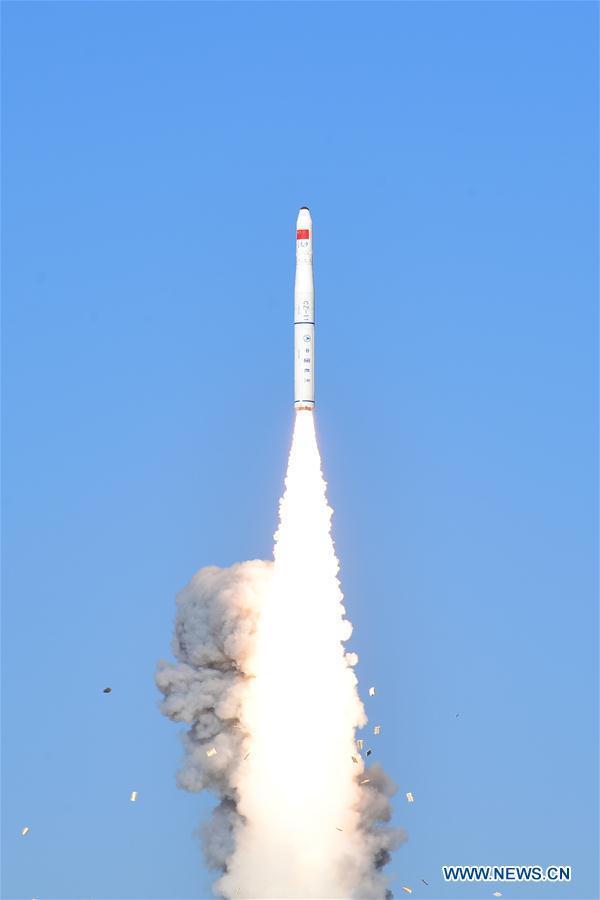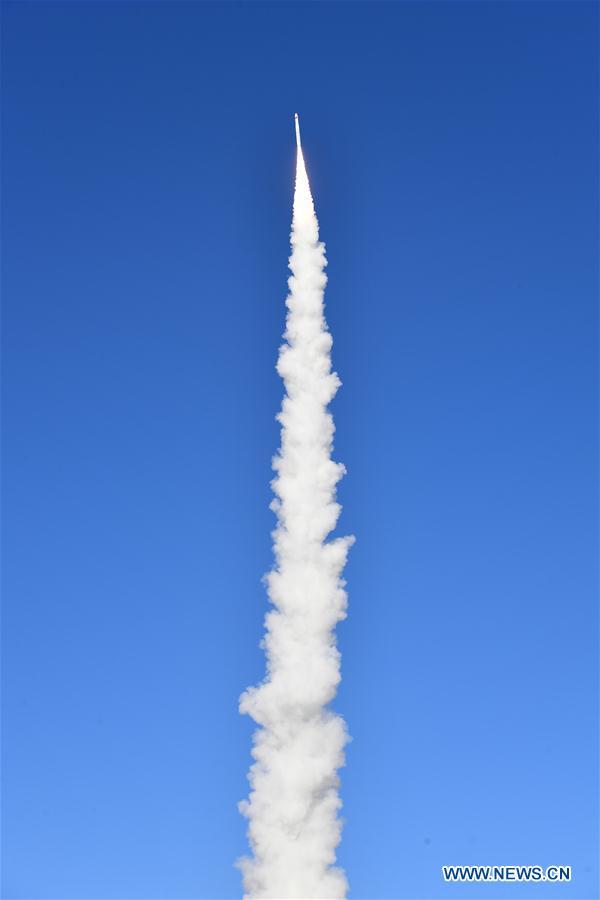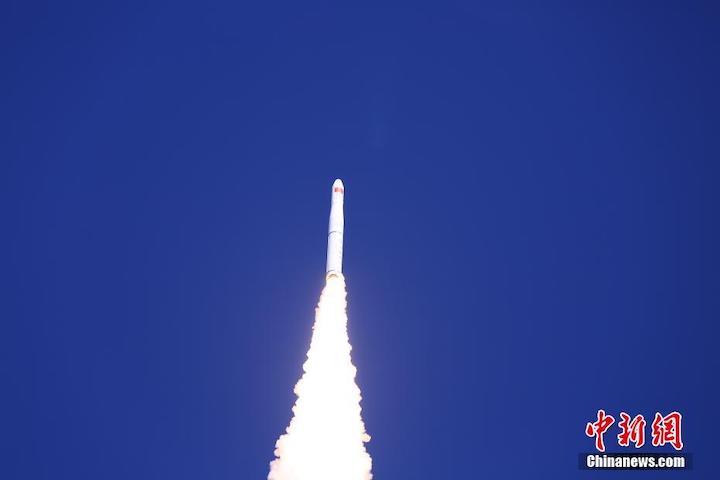
Animation showing video footage captured by the Jilin-1 commercial satellite of the OneSpace OS-X1 suborbital rocket launch from Jiuquan on September 7, 2018.
21.01.2019

A Long March-11 rocket carrying two satellites for multispectral imaging and two test satellites blasts off from the Jiuquan Satellite Launch Center in northwest China, Jan. 21, 2019. China launched two satellites for multispectral imaging on a Long March-11 rocket from the Jiuquan Satellite Launch Center in northwest China at 1:42 pm on Monday. The satellites have successfully entered their preset orbit, according to the center. (Xinhua/Wang Jiangbo)
-
China launched two satellites for multispectral imaging on a Long March-11 rocket from the Jiuquan Satellite Launch Center in northwest China at 1:42 pm on Monday.
The satellites have successfully entered their preset orbit, according to the center.
The two satellites, part of the Jilin-1 satellite family, were independently developed by Chang Guang Satellite Technology Co. Ltd.
Loaded with a multi-spectral imager and an infrared camera, they will form a network with the 10 previously launched Jilin-1 satellites, providing remote sensing data and services for forestry, shipping and resource and environmental monitoring.
The launch also carried two test satellites. Lingque-1A is the first verifying satellite for the Lingque Constellation planned by Beijing ZeroG Technology Co., Ltd. It can take photos of Earth, conduct high-speed data transmission and inter-satellite communication.
Xiaoxiang-1 03 is a technology test satellite developed by Spacety Co., Ltd. based in Changsha, Hunan Province. It will be used to verify radio communication and small remote sensing experiments.
It is the 299th mission of the Long March carrier rocket series.

A Long March-11 rocket carrying two satellites for multispectral imaging and two test satellites blasts off from the Jiuquan Satellite Launch Center in northwest China, Jan. 21, 2019. China launched two satellites for multispectral imaging on a Long March-11 rocket from the Jiuquan Satellite Launch Center in northwest China at 1:42 pm on Monday. The satellites have successfully entered their preset orbit, according to the center. (Xinhua/Wang Jiangbo)
Quelle: Xinhua
+++

A Chinese Long March 11 rocket after liftoff from Jiuquan at 05:42 UTC on January 21, 2019. CNS
China's second and the world's sixth orbital launch took place Monday, seeing four small satellites successfully sent into orbit from the Jiuquan launch centre in the Gobi Desert.
Liftoff of the light-lift Long March 11 solid-fuelled rocket occurred at 05:42 UTC (13:42 local) at Jiuquan, with Chang Guang Satellite Technology (CGST), the Jilin Province-based maker of the two Jilin-1 hyperspectral satellites aboard, announcing success of the mission to Sun-synchronous orbit (SSO) within the hour.
The Jilin-1 hyperspectral 01 and 02 satellites have a resolution of 5 metres, a 110 km swath width and collect data across 26 spectral bands.
Jilin Lincao-01 will focus on remote sensing for forestry applications, while the second, named Wenchang Supercomputer-01 through backing from Wenchang city, Hainan Province, is dedicated to marine observation.
The new Jilin-1 satellites join 10 previously launched sats in orbit, which are part of plans by CGST to put 60 satellites by around 2020 and complete a constellation of 138 satellites in low Earth orbit by 2030 for global all-day, all-weather, full spectrum Earth observation, as part of a regional economic rejuvenation initiative.
Long March-11 launches Jilin-1 Spectrum 01/02, Lingque-1A and Xiaoxiang-1 03 satellites.
The Jilin constellation aims to provide data for use in areas including land resources monitoring, land surveying and mapping, mineral resources development, smart city construction, agriculture yield estimation, environmental monitoring, disaster prevention and other areas.
One of the already-orbiting Jilin-1 video satellites captured spectacular footage of a Onespace suborbital rocket launch taking place at Jiuquan last autumn.

Animation showing video footage captured by the Jilin-1 commercial satellite of the OneSpace OS-X1 suborbital rocket launch from Jiuquan on September 7, 2018.
Also aboard the Monday launch were satellites for Changsha-based Spacety and ZeroG Lab of Beijing, two further private satellite making companies, along with CGST, to have emerged since a late 2014 government decision to open the Chinese space sector to private capital.
Xiaoxiang-1 (03) (潇湘一号03星) is a 6U CubeSat is a technology test satellite in cooperation with Qingteng University carrying a a full-color miniature remote sensing camera.

The Xiaoxiang-1 (03) 6U CubeSat.
The satellite also has a design lifetime of one year and will then test the capability to remove itself from orbit in order to not contribute to the issue of space debris, using a sail for increasing the impacts of atmospheric drag to aid deorbiting.
Spacety is looking to launch around 20 satellites this year across 5 or 6 missions.

The deorbiting sail aboard the Xiaoxiang-1 (03) CubeSat from Spacety and Qingteng University.
ZeroG Lab of Beijing also had a remote sensing technology demonstrator(Chinese) on the launch for its Magpie Constellation, which will be composed of 132 6U CubeSats with optical resolution better than 4 metres and eventually 378 satellites to provide revisits over regions every 10 minutes.

ZeroG Lab's strategic plan.